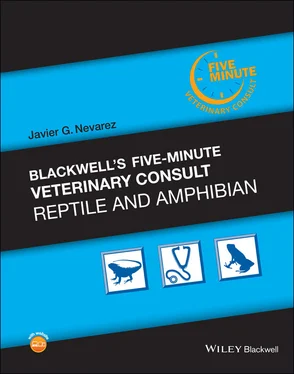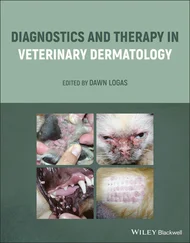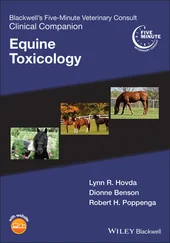Incubators with temperature control
Thermometer and hygrometer for cages
Food/water bowls and accessories that can be easily disinfected
Appropriate food for the species
UVB lights
Surgical pack with micro‐instruments (ophthalmic instruments)
Otoscope and ophthalmoscope
Topical antibiotics (silver sulfadiazine, SilvaSorb®, Medline Industries, Inc., Mundelein, IL)
Ceftazidime
Ceftiofur crystalline free acid
Ciprofloxacin
Enrofloxacin
Metronidazole
Trimethoprim sulfa drugs
Tetracycline
Fenbendazole
Ivermectin (toxic to chelonians)
Alfaxalone
Ketamine
Medetomidine and atipamezole
Propofol
Tiletamine–zolazepam
Dextrose
Balanced crystalloid fluids (Normosol™ R, Hospira, Inc., Lake Forest, IL)
Lactated Ringer's solution
0.9% NaCl
Anatomy and Physiology of Reptiles
Taxonomy (over 10,000 species)
| Order |
Sub‐order |
# of species |
| Squamata |
Sauria (lizards) |
6,512 |
|
Serpentes (snakes) |
3,709 |
|
Amphisbaenia (worm lizards) |
196 |
| Chelonia |
Cryptodira (turtles and tortoises) |
351 (sub‐orders combined) |
|
Pleurodira (side‐necked turtles) |
|
| Crocodylia (crocodilians) |
|
24 |
| Rhynocephalia (tuataras) |
|
1 |
Reptiles have one‐fifth to one‐seventh of a mammal’s metabolism at 37 degrees C (98.6 degrees F) and one‐tenth of the food requirements compared with birds and mammals. The digestive efficiency of herbivores is 30–85% and that of carnivores is 70–95%. Reptiles are capable of switching to anaerobic metabolism to satisfy physiological needs during diving, fast sprints, etc., but this causes a significant drain of energy reserves.
Reptiles are ectothermic, but some species are capable of generating or retaining large amounts of heat. Some pythons can generate heat by muscle contractions to maintain the temperature of their eggs. Leatherback turtles ( Dermochelys coriacea ) have large amounts of body fat, which allows them to retain heat. Thermoregulation is primarily controlled by the preoptic nucleus of the hypothalamus but the pineal gland and parietal eye may also play a role. Most reptiles regulate their temperature by heliothermy or thigmothermy. Heliotherms absorb heat from radiant sources such as the sun. Thigmotherms absorb heat via conduction by being in contact with hot surfaces. Because of a greater ability to regulate heart rate, reptiles can heat up faster that they cool down. Right to left blood shunts allow reptiles to bypass the lungs and decrease evaporative losses. Vasodilation and constriction of peripheral vessels also aid in thermoregulation. During the day, the extremities will warm up first and peripheral vasodilation occurs. At night, peripheral vasoconstriction combined with a slower heart rate allows retention of core body heat. The heating and cooling of larger reptiles occurs more slowly. In general terms, the majority of common reptile species cared for in captivity typically have a preferred optimal temperature zone of 20–38 degrees C (68–100.4 degrees F) for most species. However, due to the wide array of natural habitats from which reptiles originate, the preferred optimal temperature zone can be quite varied.
Brumation is the process by which a reptile reduces its metabolism and becomes dormant during the winter. As opposed to hibernation in mammals, brumating reptiles may retain a low level of activity, wake up to drink water and then go back into dormancy. The stimulus for and emergence from brumation is primarily influenced by temperature, but other factors, including reproduction and food availability, may also play a role. There are four stages of brumation:
1 A decrease in temperature leads to inhibition of appetite.
2 Reptiles seek a hibernaculum that provides insulation against freezing and enough moisture. Oxygen availability is less important.
3 Fat stores (liver, fat bodies, tail) are used as energy source, especially when emergence occurs in the spring.
4 Emergence from brumation is triggered by an increase in temperature with photoperiod having little to no influence since most brumate underground. During this period a reptile should not lose more than 10% of their body weight.
Captive reptiles undergoing brumation should be weighed on a bi‐monthly schedule to monitor their weight. It is critical that water be available during brumation in captivity to avoid dehydration. Brumating reptiles can be soaked weekly to every other week.
Estivation is a period of inactivity during the dry season, mostly used by desert species in an effort to conserve water. Some turtles may leave the water during periods of drought and bury themselves on land until the conditions are favorable again. This is less likely to occur in captivity since a constant water source is available.
The epidermis consists of the stratum corneum with an outer keratin layer, an intermediate lipid‐rich layer and the stratum germinatum with cuboidal cells. Two types of keratin—alpha and beta—are present. Alpha keratin is flexible and is found in hinge regions of the skin, while the more rigid beta keratin provides strength and hardness, as in the shell of chelonians. The wide ventral scales of snakes are called gastropeges. The dermis is composed of connective tissue, blood vessels, lymphatics, and nerves.
Chromatophores are pigment‐containing cells that lie between the epidermis and dermis. They may also occur in the peritoneum. Chromatophores function in camouflage, sexual display, thermoregulation, and behavior. Melanophores are located deep in the sub‐epidermal layer and produce melanins, black, brown, yellow, or gray in color. Carotenoids can be found beneath the epidermis but above melanophores and produce yellow, red, and orange pigments. Iridophores located within the dermis contain guanine (a breakdown product of uric acid), which reflects light in the blue wavelength (Tyndall scattering). The combination of the iridophores’ blue reflection and carotenoid yellow pigmentation create the green coloration common in many reptiles.
Ecdysis is the process by which reptiles shed their skin. Ecdysis is under pituitary and thyroid control. Continuous ecdysis occurs in chelonians and crocodilians while discontinuous ecdysis occurs in snakes, lizards, and tuataras. For simplicity, the ecdysis cycle can be split into a resting phase and a renewal phase, which has up to five stages. During the beginning of the renewal phase, the skin begins to appear duller, as regeneration of cells and enzymatic separation of the skin layers becomes activated. This period lasts approximately 5 ± 2 days. Afterwards, the skin becomes even duller and the spectacles turn opaque in what is commonly described as snakes being in “blue”. This appearance is in large part due to lymphatic fluid accumulation that helps separate the old and new skin layers. This second period lasts 5 ± 2 days, followed by the last stage, during which lymphatic fluid resorption occurs leading to a clearing of the skin and spectacle. At this time, the skin regains some of its sheen and shedding typically occurs 5 ± 2 days after that. Hydration is critical for proper ecdysis and dehydration is a common cause of dysecdysis. The frequency of shedding will vary with environmental temperature, food intake, and growth of the animal.
Читать дальше












